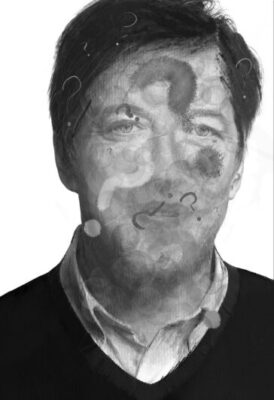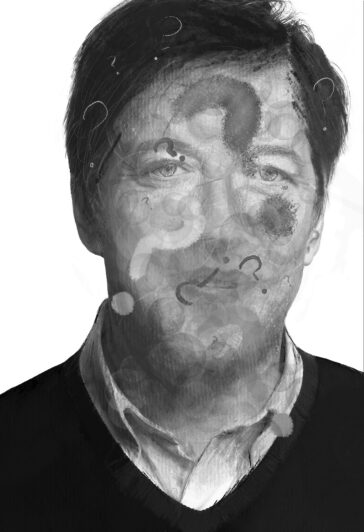Prosopagnosia, also known as ‘face blindness’ refers to the neurological condition in which those affected suffer a severe deficit in recognising familiar people from their face and rely on voices or distinct features such as hairstyle or clothing to recognise people. Alongside the inability to recognise faces, many people also report deficits in other aspects of facial processing including judging gender, age and/or distinguishing emotional expressions. Research has found the prevalence of developmental prosopagnosia may be as many as 1 in 50 people, equating to 1.5 million people in the UK. In attempt to convey the personal experiences of those with the condition to those without, I composed the accompanying drawing of a distorted form of the well-known British actor, comedian and broadcaster Stephen Fry who has shared his own experience of prosopagnosia.



This piece expounds upon the objective: identifying various components and key structures of the nervous system by focusing on a neurological disorder known as prosopagnosia. Prosopagnosia is characterized by the inability to identify known individuals based upon their facial features. More specifically, people diagnosed with prosopagnosia use other means to identify people they know such as non-facial features, like their hairstyle or the sound of their voice. In some cases, prosopagnosia extends beyond facial recognition to object recognition, such as the inability to identify a car. Previously, it was thought that prosopagnosia resulted from neurological trauma, however more recent evidence suggests that it’s a genetic disorder acquired during development with a genetic link to autism. This disorder has shown an association with the mid-fusiform gyrus and the inferior occipital gyrus parts of the brain. In recent research, the mid-fusiform gyrus has displayed altered white matter connections in patients with prosopagnosia. This disorder exists on a spectrum of severity with differing symptoms. One neuroscientist, Oliver Sacks, who suffered from prosopagnosia, recounted how sometimes he couldn’t recognize his own face in a mirror. The above art piece created by Heather Buchan illustrates (quite impressively) one interpretation of how someone with prosopagnosia might see British celebrity Stephen Fry, who suffered from prosopagnosia.